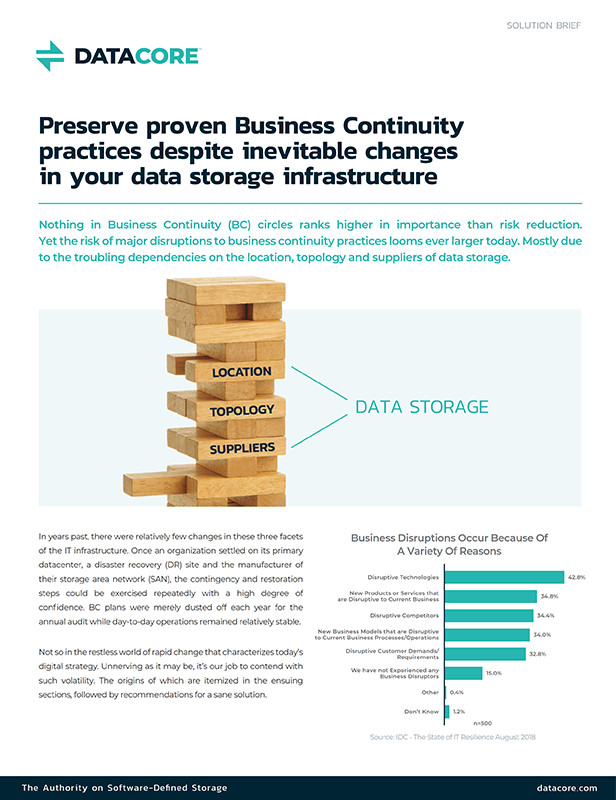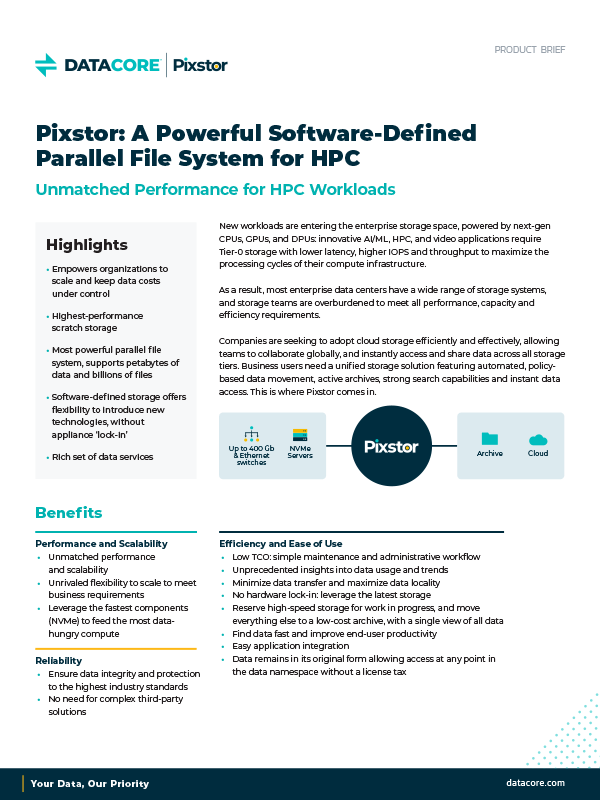Nothing in Business Continuity (BC) circles ranks higher in importance than risk reduction. Yet the risk of major disruptions to business continuity practices looms ever larger today. Mostly due to the troubling dependencies on the location, topology and suppliers of data storage.
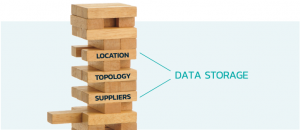
In years past, there were relatively few changes in these three facets of the IT infrastructure. Once an organization settled on its primary datacenter, a disaster recovery (DR) site and the manufacturer of their storage area network (SAN), the contingency and restoration steps could be exercised repeatedly with a high degree of confidence. BC plans were merely dusted off each year for the annual audit while day-to-day operations remained relatively stable.
Not so in the restless world of rapid change that characterizes today’s digital strategy. Unnerving as it may be, it’s our job to contend with such volatility. The origins of which are itemized in the ensuing sections, followed by recommendations for a sane solution.
Shifting Locations
You’d think that primary and DR sites would be relatively permanent, until you appreciate how distributed your organization has become-either for reasons of proximity to your clients or to your employees. The increasing dependency on IT assets beyond the data center at Remote Offices / Branch Offices and satellite outposts further exacerbates the BC challenges. Especially since many of these remote stations provide crucial data access and updates – serving as the lifelines of healthcare, manufacturing, hospitality and retail industries.
Moreover, the intangible whereabouts of DR sites can prove quite disconcerting when ephemeral cloud destinations start replacing your brick and mortar buildings.
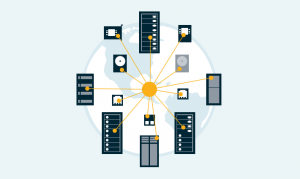
Collapsing Technologies
The evolving architecture of data storage at the main data center and each of these scattered locations adds further complication. No longer can we count on a central array to replicate real-time updates to its mirror image at the DR facility on behalf of numerous hosts. Instead, the variety of storage deployments is nothing short of overwhelming. They range from conventional 3-tier SANs to hyperconverged storage clusters, and everything in between, including bare metal servers. Although intended to simplify administration, some of these choices upset well-established processes for avoiding and recovering from outages. Such variables compound complexity and errors. They can considerably lengthen the duration of downtime past the maximum acceptable outage (MAO) time, with dire consequences.
“Incomplete BIAs [Business Impact Analyses] will lead to an uncoordinated response to a disruption and delayed recovery.”
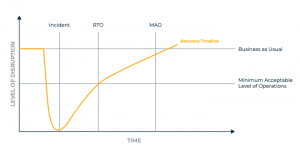
Diverse Brands and Models
Another troubling contribution to broken BC practices comes from the diversity of storage devices sprinkled across your IT universe. Some with proprietary data protection, replication and recovery tools, others missing them altogether. Each variation requires very different operational procedures (runbooks) that must be individually verified and subsequently integrated into the overall BC/DR process, multiplying the risk of errors.
Several factors in modern IT organizations contribute to the diverse storage makeup. They include:
- Specialized storage systems matched to the value of the data being stored. For example, All-Flash Array storage (AFAs) for latency-sensitive workloads, lower cost mid-range storage for the other 80% of primary data, supplemented by secondary storage and elastic cloud storage for long retention archives. (i.e., performance tier, capacity tier and archive tier, respectively.)
- Planned obsolescence causing incompatible behaviors between different generations of storage
- Mergers and acquisitions resulting in a mixed collection of storage devices
- High-priority / project-specific capacity acquired without regard for existing norms
- New executives bringing in different brands they feel more comfortable with
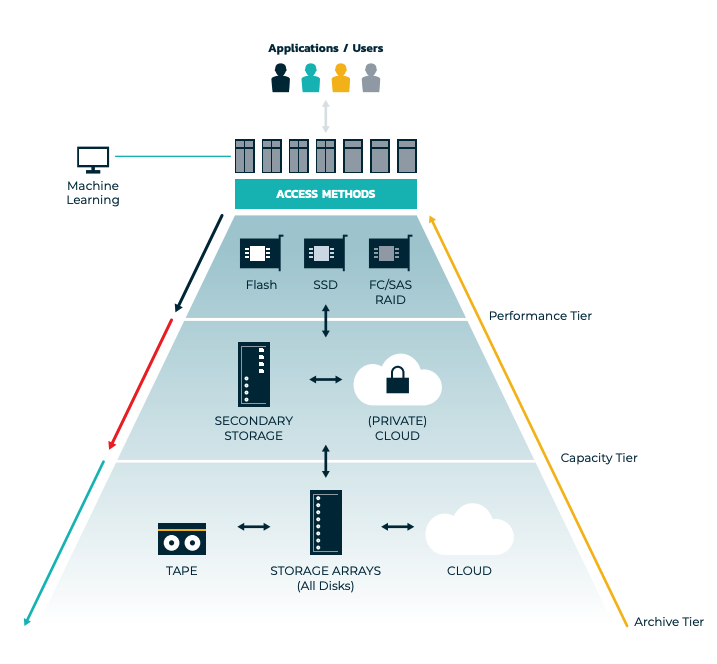
Guidance
Step 1 – Unify BC/DR Processes
Ideally, you would standardize on one all-inclusive model of data storage, just like old times. But these days such singularity is neither practical nor affordable. The functional and economic impetus driving multiple tiers of purpose-built storage show no signs of abating.
The most viable alternative we’ve arrived at separates the BC/DR functions from the discrete storage systems. This is accomplished by up-leveling the services responsible for data replication, snapshots, continuous data protection and rollbacks. Rather than embedding them inside each unit, the functions run outside in a device-independent layer.
DataCore customers worldwide with quite the variety of environments find it very effective.
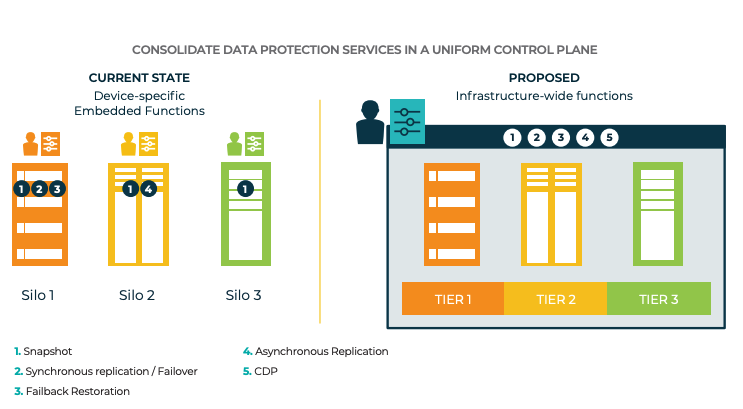
2. Insulate BC/DR Plans from Storage Infrastructure Changes
With a uniform control plane for BC/DR data services in place, the location, topology and type of data storage become interchangeable. In other words, there’s very little change to Business Continuity plans when any of these parameters change or expand. Clearly, equipment must be physically added or moved and the specifics documented, but the runbook remains largely intact. Only modest and relatively trivial revisions are necessary.
Readily Adapt to Business Needs While Modernizing
Through the clear separation of data services from where the data is stored you gain incredible flexibility to confidently adapt proven downtime avoidance and recovery methods to new scenarios. Reducing the cost and complexity of your Business Continuity plans in this way helps you achieve high levels of application availability while accelerating the pace of IT modernization.
What to Do Next
Now that you have a better understanding on how to standardize your storage-related BC/DR practices, take the next step. Watch this webinar for additional guidance on Business Continuity Measures for Volatile Times.
